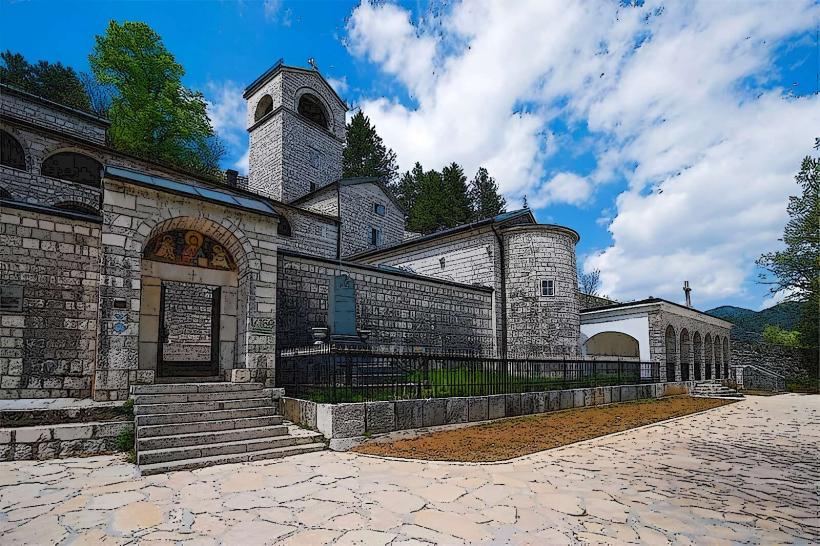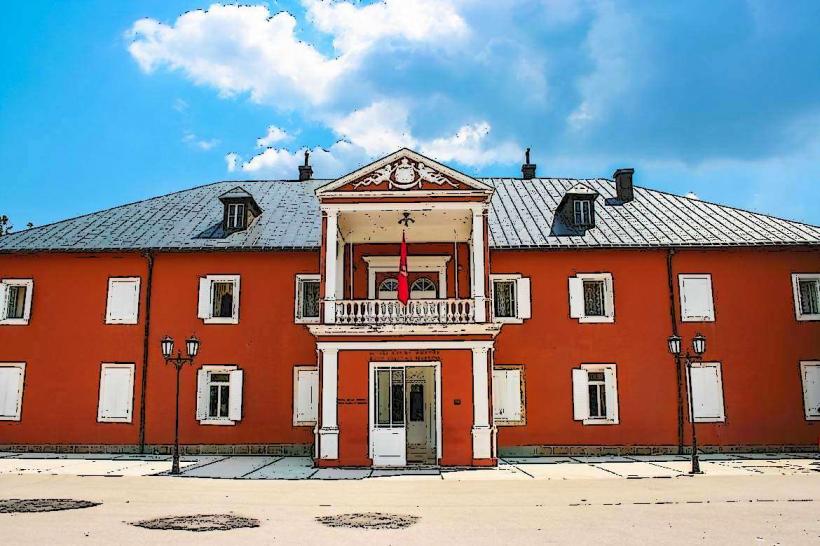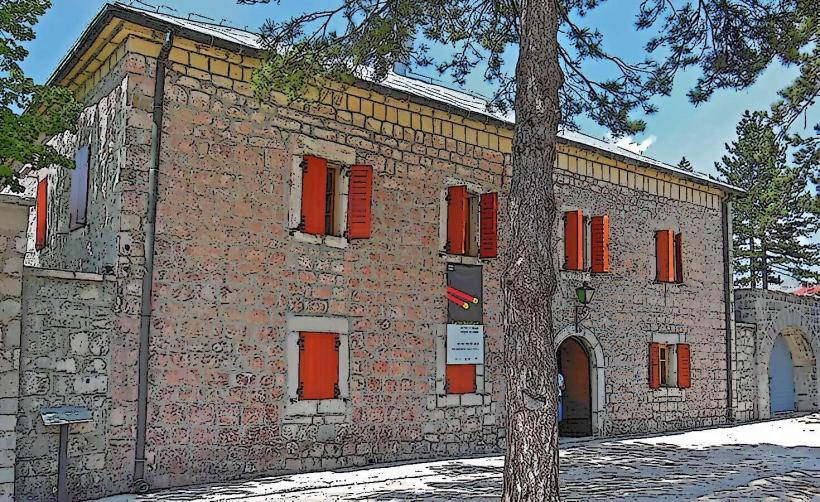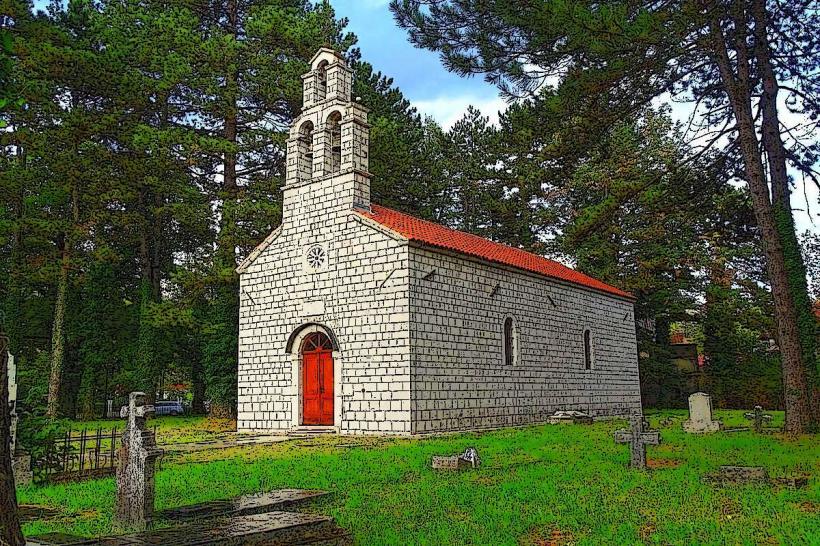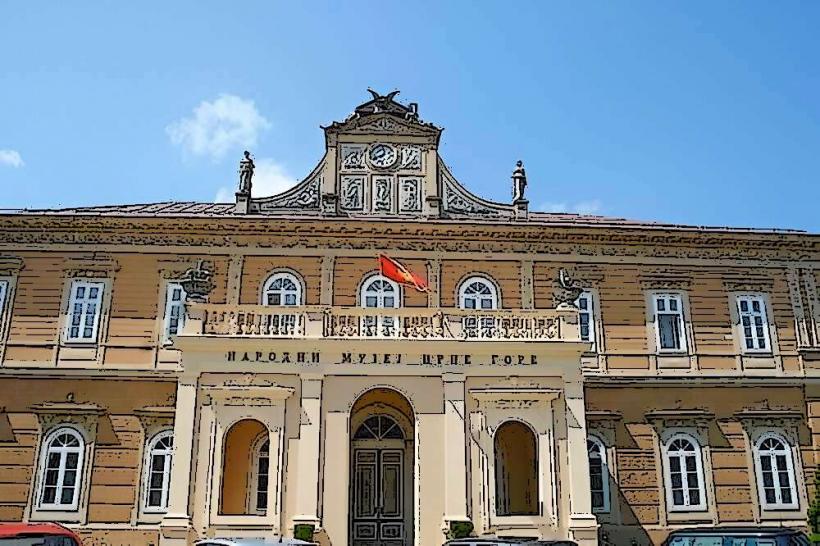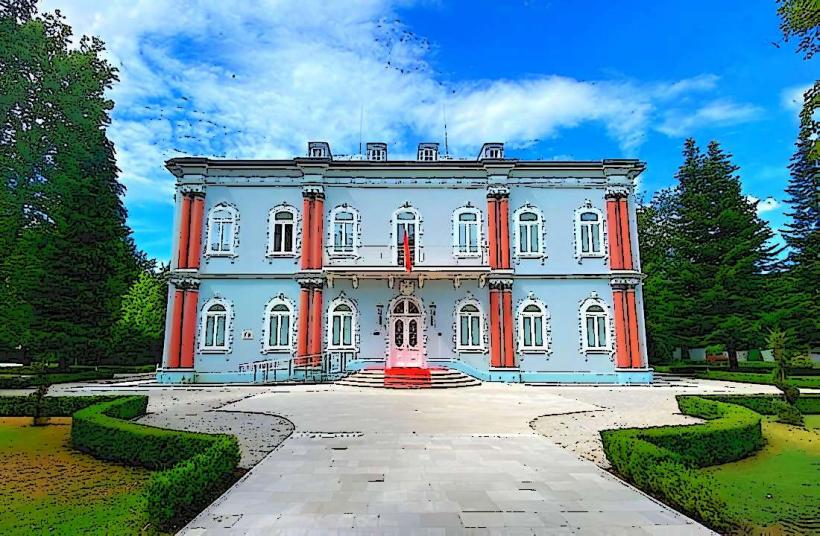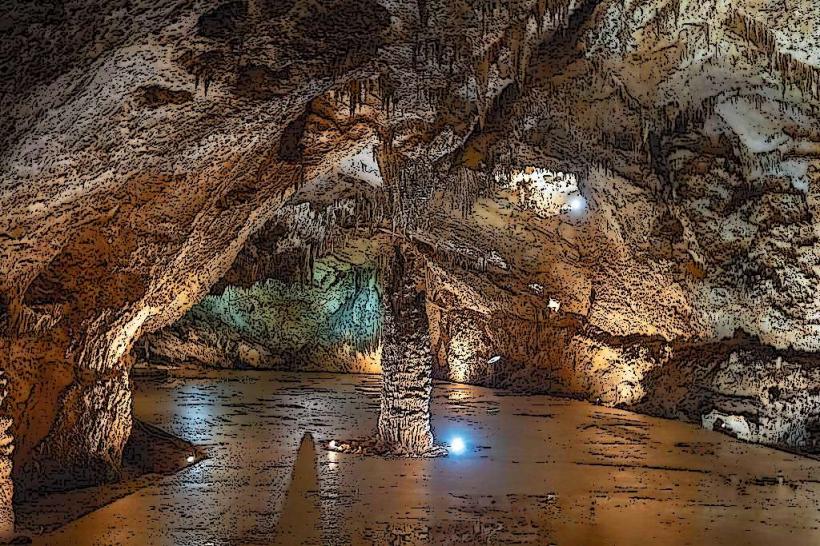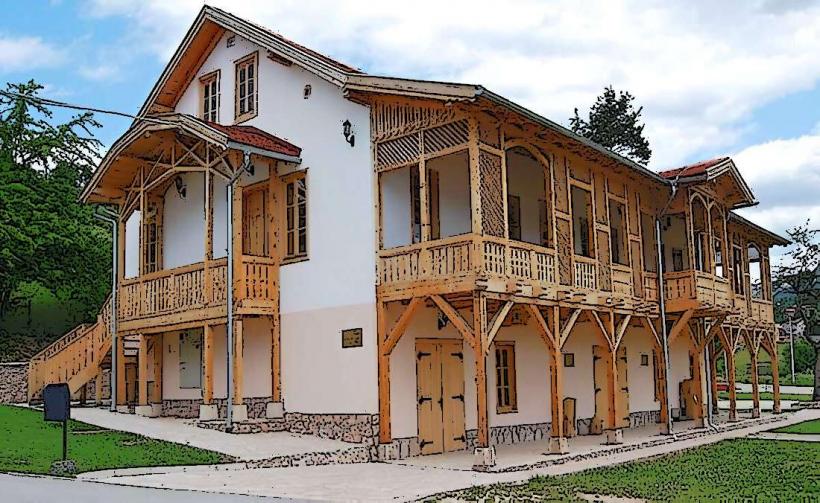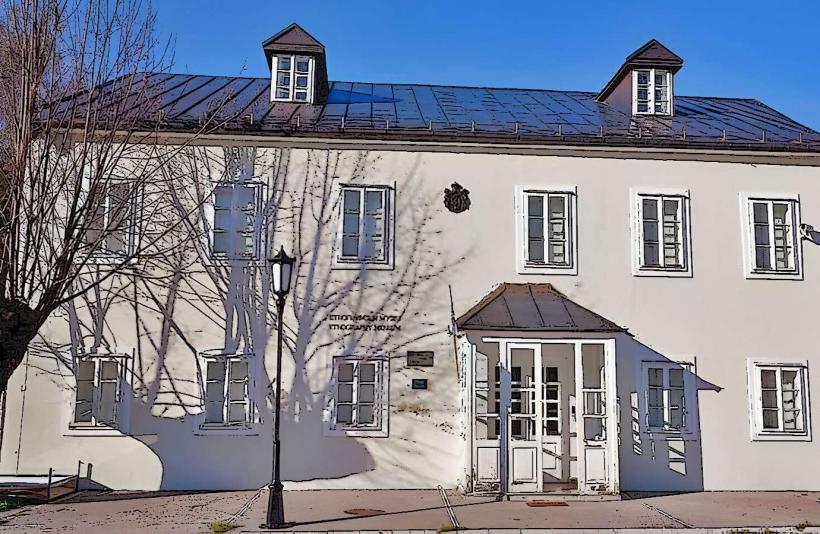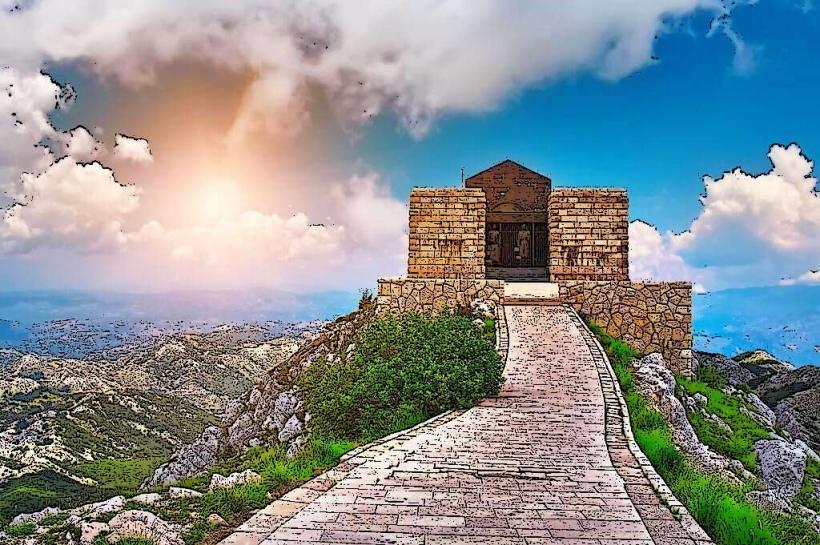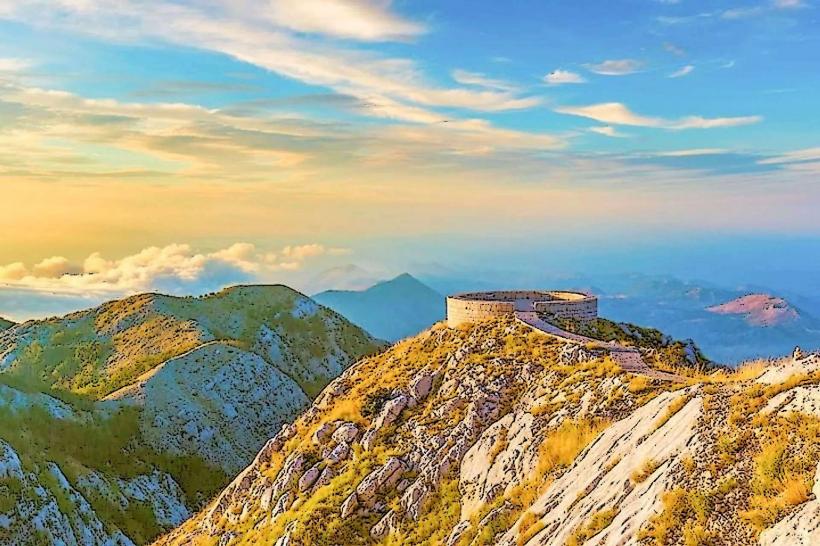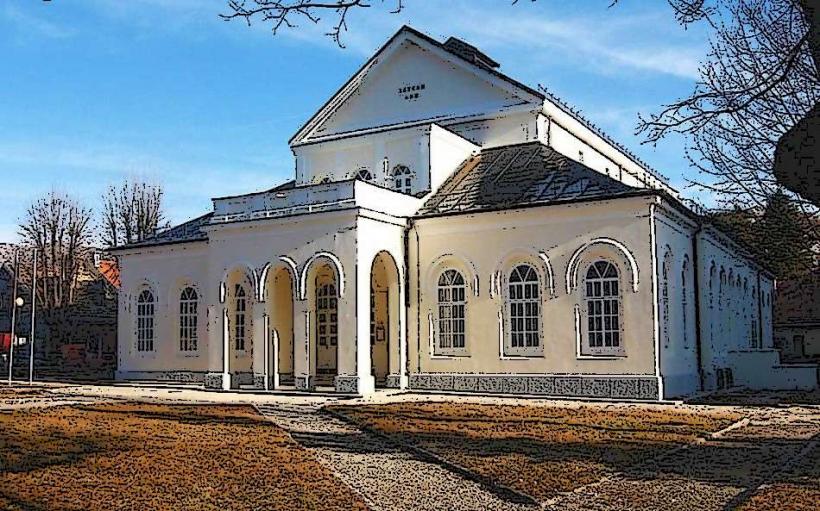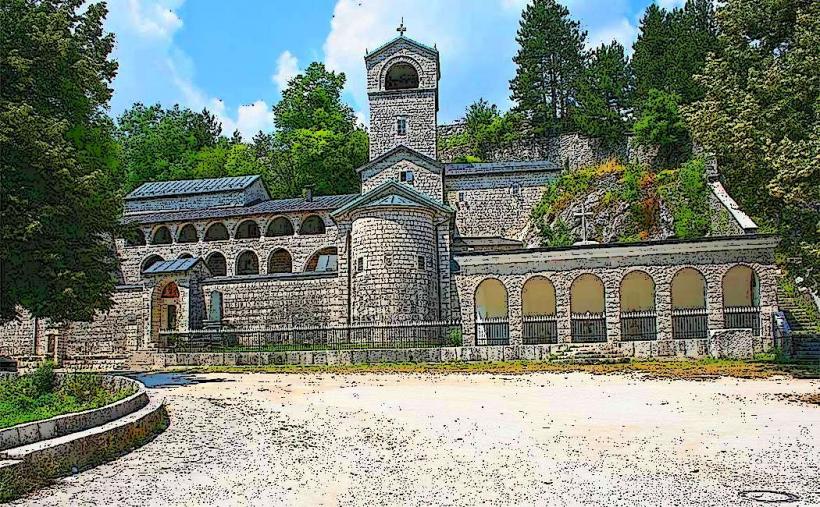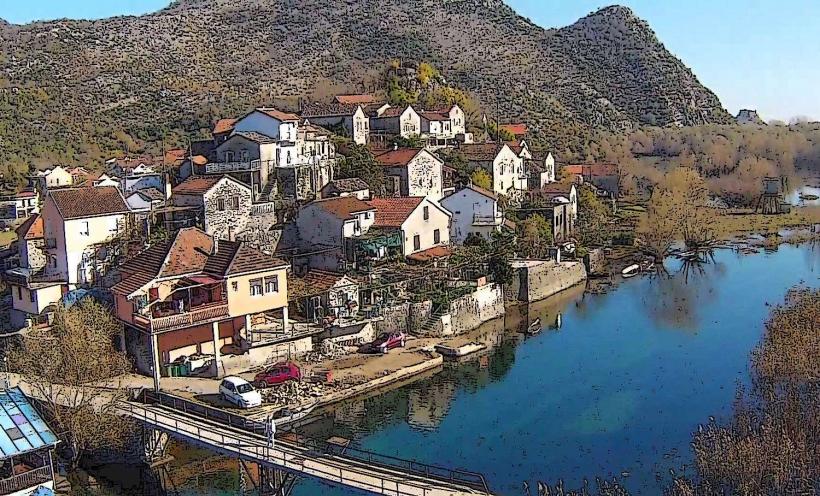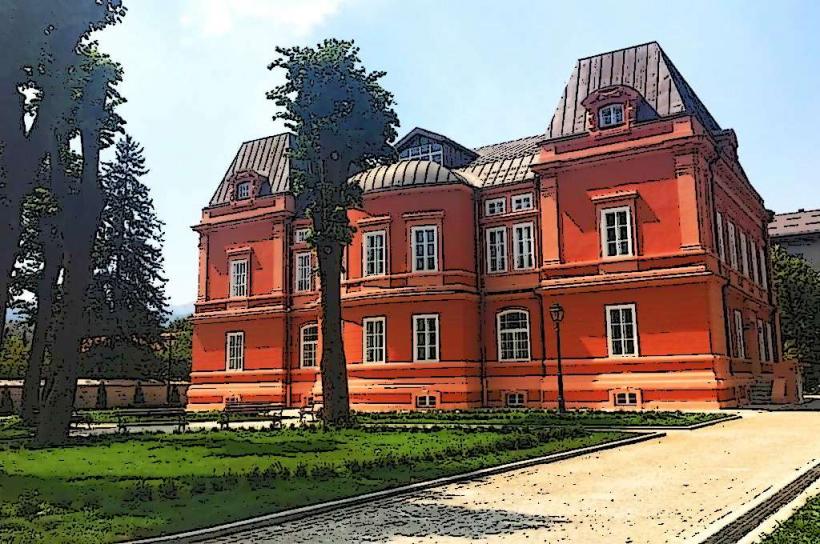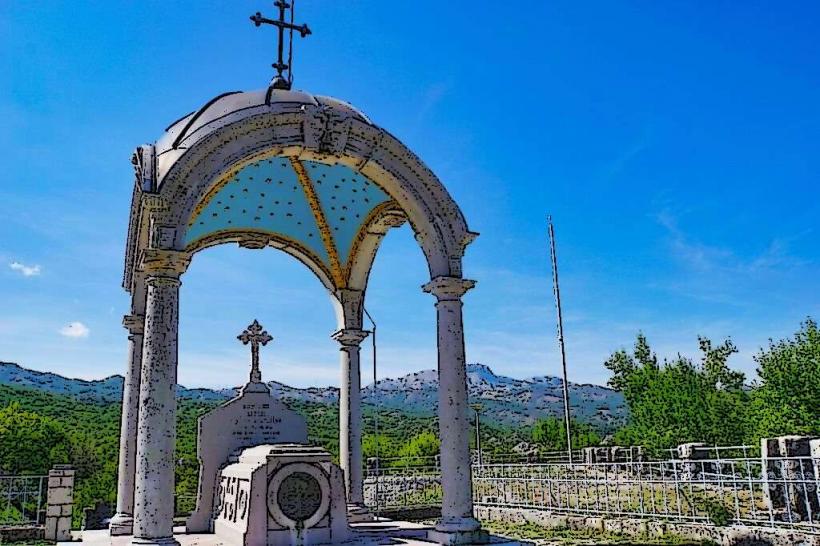Information
Landmark: Rijeka CrnojevićaCity: Cetinje
Country: Montenegro
Continent: Europe
Rijeka Crnojevića is a small but historically and geographically significant settlement located in the Montenegrin coastal region, near Lake Skadar. It lies along the Rijeka Crnojevića River, which is one of the main waterways that feed into Lake Skadar, the largest lake in the Balkans. Known for its natural beauty and historical relevance, Rijeka Crnojevića is a popular spot for visitors interested in Montenegro’s cultural heritage and picturesque landscapes.
Geography and Natural Setting
Location: The settlement of Rijeka Crnojevića is situated in the central part of Montenegro, close to the southeastern shores of Lake Skadar. It is located approximately 30 kilometers (19 miles) from Podgorica, the capital of Montenegro, making it a short drive from the city, while also offering a more tranquil and scenic setting compared to the hustle and bustle of urban life.
Rijeka Crnojevića River: The river itself is notable for its winding path through a picturesque valley, eventually feeding into Lake Skadar. The river and its surroundings are rich in biodiversity, offering lush vegetation and opportunities for birdwatching, particularly due to the proximity to Lake Skadar, which is a UNESCO Ramsar Wetland of International Importance.
Lake Skadar: Lake Skadar is a UNESCO protected area and the largest freshwater lake in the Balkans. The region around Rijeka Crnojevića is recognized for its natural beauty, with rolling hills, vineyards, and diverse flora and fauna, making it a haven for nature lovers.
Historical Significance
Rijeka Crnojevića is a place of great historical importance, particularly due to its role in the Medieval Kingdom of Zeta and its connection to the Crnojević dynasty, which ruled the region during the late 14th and early 15th centuries.
- The Crnojević Dynasty:
- The settlement’s name derives from the Crnojević family, a powerful medieval dynasty that played a significant role in Montenegrin history. The family ruled over the Principality of Zeta, which later became part of the Kingdom of Montenegro.
- The Crnojević family’s influence was most prominent during the reign of Đurađ Crnojević, who was a ruler of Zeta in the 15th century. He made Rijeka Crnojevića his capital, and the settlement flourished as an important cultural and political center.
- Development of Rijeka Crnojevića:
In the late 15th century, Đurađ Crnojević built a monastery and printing house in the town, which played a critical role in preserving Orthodox Christianity and spreading Slavic literature in the region. The printing house was one of the first in the Balkans and is of great cultural importance.
The Crnojević Bridge (sometimes called Rijeka Crnojevića Bridge) near the village, built in the 19th century, remains an important architectural landmark.
- Decline and Legacy:
- The area saw a decline in political importance after the fall of the Crnojević dynasty and the Ottoman conquest of the region. Despite this, the cultural and historical legacy of the dynasty has continued to shape the identity of the area and the broader Montenegrin region.
Main Attractions and Landmarks
Rijeka Crnojevića River:
- The river is often admired for its serene beauty and clear waters. It flows through a deep valley, surrounded by lush green hills, and is popular with photographers, nature enthusiasts, and those interested in boating or kayaking.
Rijeka Crnojevića Bridge:
- The Crnojević Bridge is a notable landmark in the area, with its stone arch design that spans the river. This bridge has become an iconic symbol of the region, offering spectacular views of the river and surrounding landscape.
The Old Monastery:
- The Crnojević Monastery, located near the settlement, is a significant religious and historical site. It was founded during the time of the Crnojević dynasty and was part of the region’s cultural renaissance, particularly in preserving religious traditions.
The Old Town of Rijeka Crnojevića:
- Although much of the original town has fallen into disrepair, visitors can still explore the remnants of the settlement. The stone houses and narrow streets provide a glimpse into the town's historical past.
Vineyards and Local Wine Production:
- The area around Rijeka Crnojevića is known for its vineyards, where local wines are produced. The fertile riverbanks and mild climate are ideal for wine production, and visitors can tour the local wineries and enjoy wine tastings of traditional Montenegrin varieties.
Lake Skadar National Park:
- The town is a gateway to Lake Skadar National Park, which is rich in biodiversity and is a great place for birdwatching. It is home to thousands of bird species, including the Dalmatian pelican and great white egret, making it one of the best spots in Montenegro for nature lovers.
Cultural and Touristic Significance
Nature and Ecotourism:
- Rijeka Crnojevića’s natural setting, with its proximity to Lake Skadar, has made it a prime destination for ecotourism. Visitors can take boat trips along the river, hike the surrounding hills, and enjoy the peaceful landscapes of the region.
Cultural Heritage:
- As a historical hub for the Crnojević dynasty, Rijeka Crnojevića is also a place where visitors can learn about Montenegrin heritage and the legacy of the ruling family. Guided tours often explore the history of the town, the Crnojević dynasty, and its significant role in the cultural development of Montenegro.
Local Cuisine:
- Rijeka Crnojevića is known for its traditional Montenegrin cuisine, particularly fish dishes from the river and lake, such as smoked trout and freshwater fish. Local restaurants offer a chance to enjoy authentic meals with stunning views of the river and the surrounding landscape.
Conclusion
Rijeka Crnojevića is a charming and culturally rich destination in Montenegro, offering a mix of natural beauty, historical significance, and peaceful rural life. Whether exploring the Crnojević Bridge, visiting the old monastery, or enjoying a boat ride along the river, visitors can experience a unique slice of Montenegro’s past and natural splendor. It remains an excellent spot for those interested in Montenegrin history, ecotourism, and cultural exploration.

